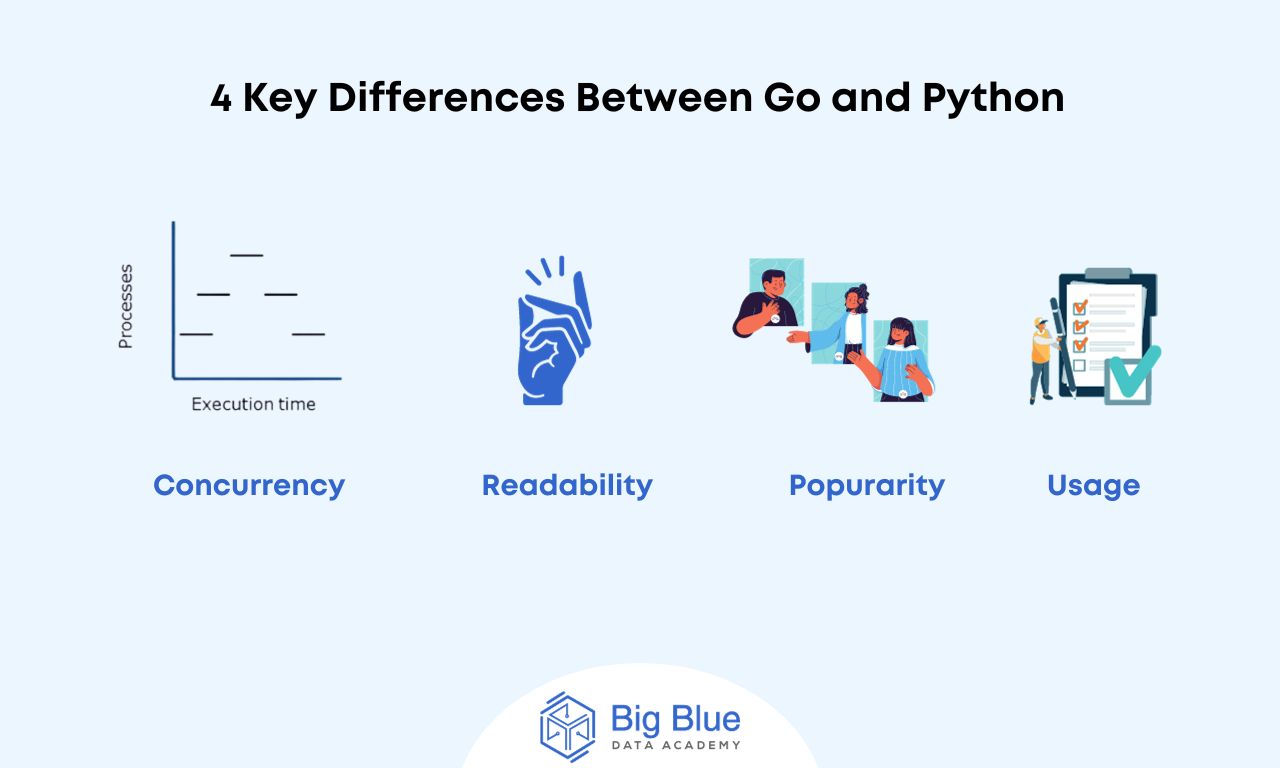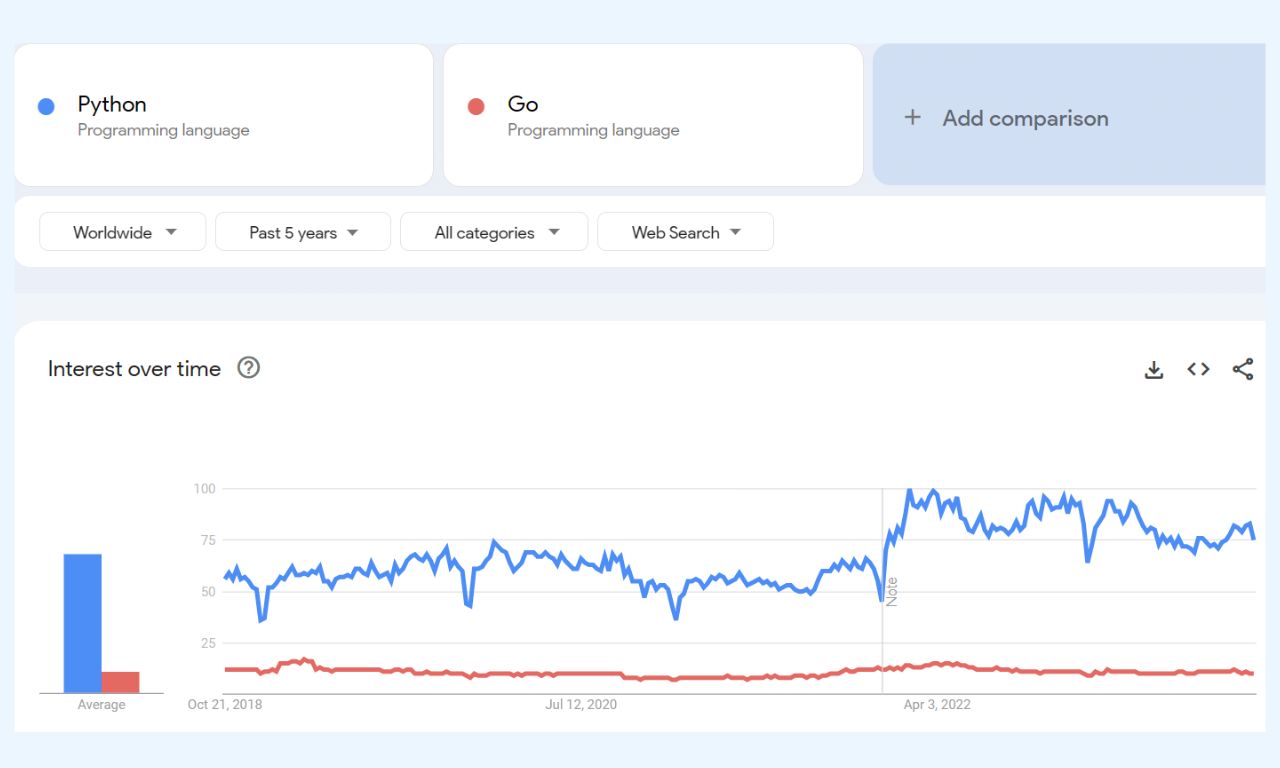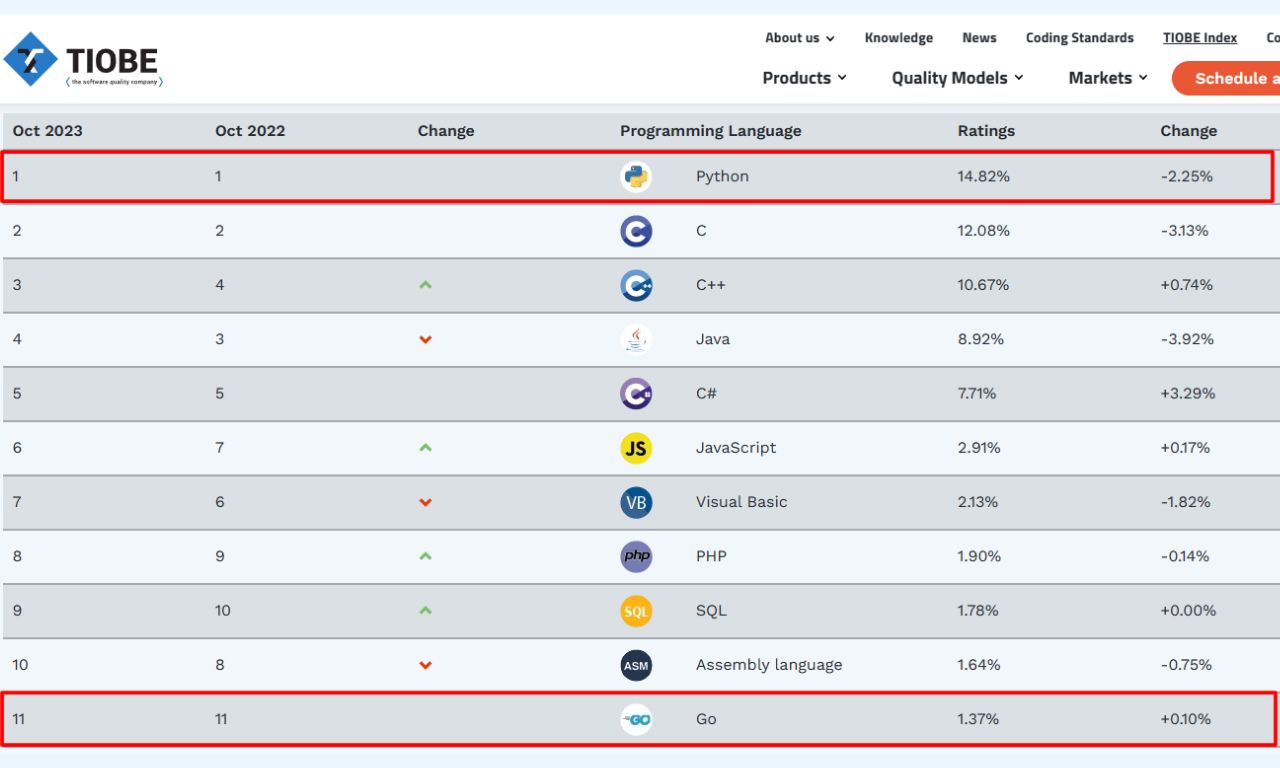Go vs Python: What Are The Differences?
Quite often, when someone is new to the field of programming, they seek information on forums and platforms like Medium and GitHub to determine which programming language is suitable for them to start learning.
There are many languages for every purpose and project one might consider.
Two popular languages are, of course, Python and Go, which we will discuss in this article.
So, in today's guide, we'll look at:
- What is Python?
- What is Go?
- Their key differences
Let's start with two basic definitions.
What is Python?
Python was developed in 1991 and is a general-purpose, high-level programming language.
It features dynamic typing, built-in data structures, and supports both procedural and object-oriented programming techniques.
It is an ideal choice for rapid application development and machine learning models.
Due to its capabilities, it is widely used by data scientists, data analysts, and data engineers.
In fact, in many job listings and interviews in the field of data science, knowledge of Python is usually a prerequisite, and candidates who have it on their resumes have a competitive advantage and better chances of being hired.
What is Go?
Go, also known as Golang, is an open-source programming language developed by Google in 2009.
Robert Griesemer, Rob Pike, and Ken Thompson designed Go, a statically typed, compiled language, with a focus on reducing the complexity of code infrastructure management within Google.
Go is a language that supports concurrent programming, allowing the simultaneous execution of multiple processes.
Syntactically, the Go language is heavily inspired by C.
Now that we've covered some basic information about these two languages, let's continue by exploring their differences in more detail.
Go vs Python: Key Differences
Although both languages have a lot of potential and are very popular, they have some key differences between them.

Difference #1: Readability
Python is known for its simple and easy-to-read syntax. This is one of the reasons it's preferred by beginners in programming.
On the other hand, Go, while relatively easy to read, enforces a single way to complete a particular task due to its stricter rules, which don't allow for the creation of unnecessary variables.
This can lead to consistency but lacks the flexibility of Python
Difference #2: Concurrency
Go was created with concurrency in mind to help Google's developers provide scalable solutions and meet the company's needs.
Concurrency means that an application can run more than one task simultaneously, with only one running on the frontend while others run in the background.
Python's support for concurrency and parallelism is limited due to the Global Interpreter Lock (GIL), which restricts the use of multiple threads for parallel execution.
However, Python has libraries like asyncio to work around this limitation.
Difference #3: Popularity
Python and Go are two highly popular languages. However, Go is relatively newer compared to Python.
Python's popularity and community far surpass that of Go.
As seen in the Google Trends graph below, Python (blue) has been on a consistently upward trend and enjoys significantly higher demand compared to Go (red).

Additionally, according to the TIOBE Programming Community Index, a popularity index for programming languages, Python consistently holds the top position, while Go ranks 11th in terms of popularity.

Difference #4: Usage
Python has a large and mature ecosystem of libraries and frameworks, such as TensorFlow, PyTorch, Pandas, and NumPy.
It is extensively used for web development, scientific computing, data analysis, and machine learning.
On the other hand, Go, due to its native support for concurrency, as mentioned earlier, is especially popular in the field of cloud computing and API development.
It is also used in system programming and microservices.
Ramping Up
In summary, our detailed discussion on Python and Go has highlighted their key differences.
The choice between Python and Go will depend on individual needs and preferences. However, if you are new to the programming world or aiming for a career in data science, Python offers more possibilities.
If you desire to learn more about Python and data science in general, follow us for more educational articles!


.jpg)